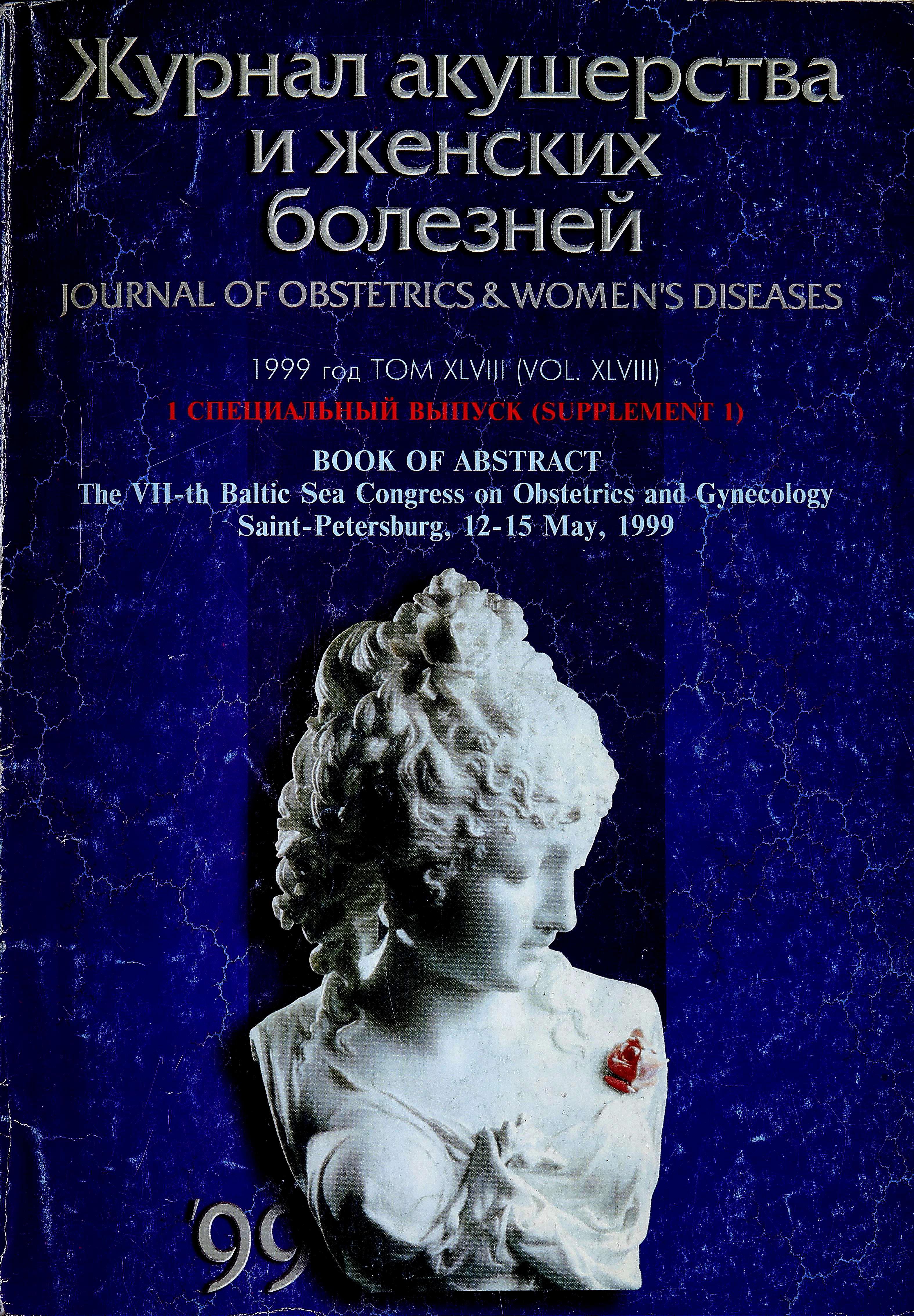Postterm pregnancy: fetal surveillance and management
- Authors: Gintautas V.1
-
Affiliations:
- Kaunas Medical University
- Issue: Vol 48, No 5S (1999)
- Pages: 68-68
- Section: Articles
- Submitted: 16.02.2022
- Accepted: 16.02.2022
- Published: 15.12.1999
- URL: https://journals.eco-vector.com/jowd/article/view/100922
- DOI: https://doi.org/10.17816/JOWD100922
- ID: 100922
Cite item
Full Text
Abstract
The objective of the study was to evaluate the impact of fetal surveillance on postterm pregnancy management. The study population consisted of 267 uncomplicated patients delivered at gestational age of 38-40 weeks and 279 postterm patients with good dating criteria at or beyond 287 days. The latter group was followed expectantly with twice-weekly NSTs with AFV/BP assessment, and with weekly physical examinations. Evaluation of outcome parameters was undertaken in control and study group. Statistical significance for the differences between groups was determined by Student’s t test at p<0.05.
Full Text
The objective of the study was to evaluate the impact of fetal surveillance on postterm pregnancy management. The study population consisted of 267 uncomplicated patients delivered at gestational age of 38-40 weeks and 279 postterm patients with good dating criteria at or beyond 287 days. The latter group was followed expectantly with twice-weekly NSTs with AFV/BP assessment, and with weekly physical examinations. Evaluation of outcome parameters was undertaken in control and study group. Statistical significance for the differences between groups was determined by Student’s t test at p<0.05.
Results. 96 patients fell into spontaneous labor within one week. The rest 183 exceeding 42 weeks of gestational age were induced relying upon antenatal surveillance results. 120 of them were with Bishop scores <6. The first stage was significantly longer in study group(9 h 37 min) to compare with control group (6 h 45 min). Pathological or suspicious for fetal distress CTG tracings were 27.3% and 7.8%, oligohydramnios 12.3% and 3.2%, meconium staining 23.7% and 5.2%, respectively. Cesarean section rate of 22.7% (mainly for fetal distress) was in study group to compare with 7.8% in control group. The great majority of complications and adverse outcomes were in cases when pregnancy exceeded 290 days.
Conclusions. Strict antepartum surveillance according to protocol should be undertaken in postterm patients with expectant management. The postterm fetus especially with meconium passage should have continuous FHR monitoring throughout labor and delivery. It is probably prudent to consider pregnancy exceeding 290 days to be postterm.
About the authors
V. Gintautas
Kaunas Medical University
Author for correspondence.
Email: info@eco-vector.com
Lithuania, Kaunas
References
Supplementary files







